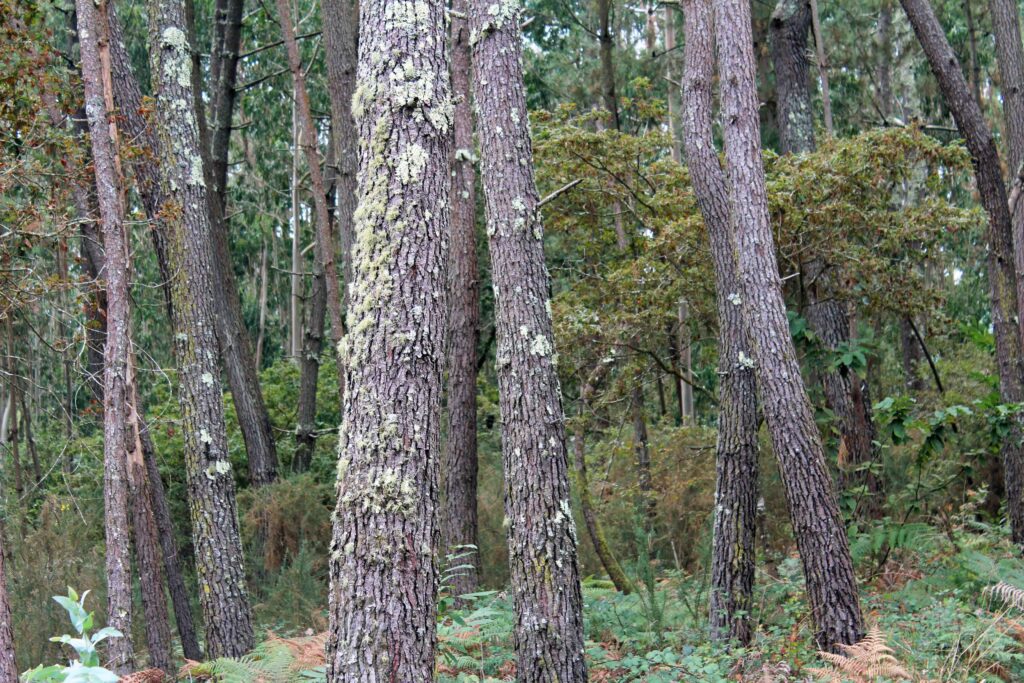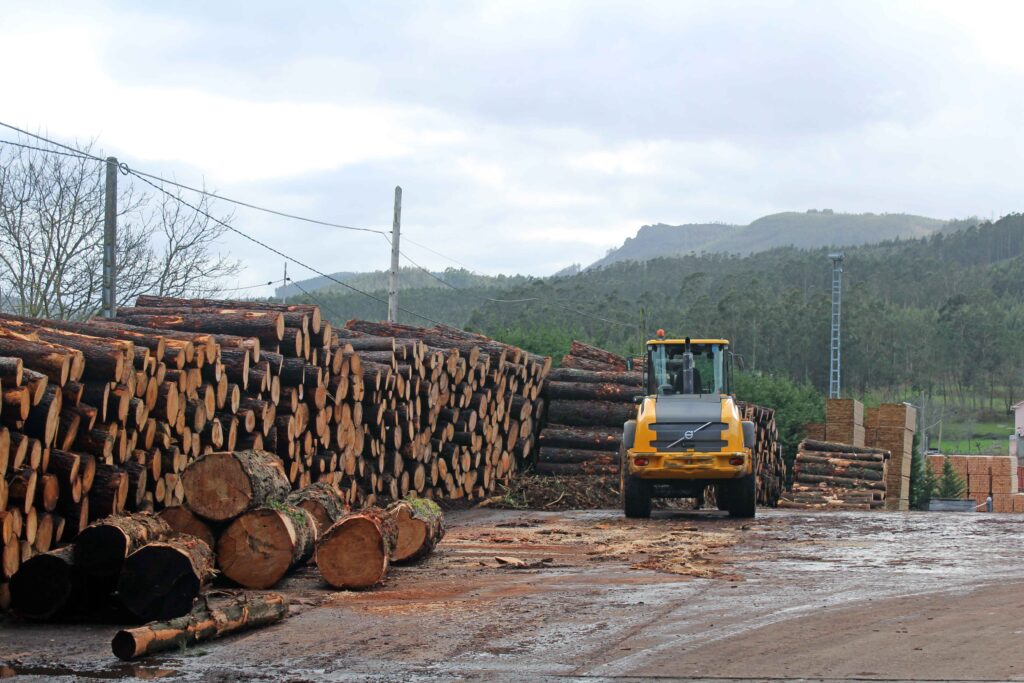Structural Pine
Coming to Galicia I was shocked that I wasn’t able to find Structural Pine locally produced. The first question is, Why did I expect to find it? Answer: Because it is such a common construction material in the UK and I took it for granted that it would be used and available in a foresting region with pine trees. At the same time, I didn’t know much about the market or forestry in general. I’ve learnt a lot since I arrived in Galicia and I want to share a quick something about why structural Galician pine isn’t readily available and what’s changing.

Demand
If there’s demand, there’s normally supply, and this is one of the main reasons you won’t find structural Galician pine. There is not a large market for this product locally in Galicia. Why not?
History and scepticism
Historically in Galicia, stone was used for vertical structural elements and wood was used for horizontal structure. However, hard woods such as chestnut and oak were preferred to softwoods such pine and other conifers.
This tradition, along with other factors, reinforced scepticism around pine and softwood use in the construction industry in Galicia. It is viewed as a cheap and inferior option, especially by the older generations. This being a prevalent and considerable barrier to the future growth of this sector.
Genetics
In addition the pine species grown in Galicia, such as Monterey (Pino Radiata) and Maritime (Pino Pinaster), have strong competition from northern European growers. Fir and spruce for example, which you will find a lot of on the UK market, grows tall, straight and with little tapering from the base to the top of the trunk. Therefore, you can get a good yield (many lengths of timber) from a single trunk as well as having tight growth rings (signifying strength) and smaller knots.
While these characteristic are related to the species they can be altered with selective tree breeding. Due to the lack of demand for structurally certified timber, there hasn’t been the same amount of effort put into breeding programs to help produce this kind of pine product. Therefore, the pine available in Galicia at the moment is generally destined for furniture carcases, non-structural construction, packaging, palettes and paper. Which contributes to the idea of pine wood as an inferior construction material.

Things are changing…
However, in the last two years there have been some significant developments. The first to note is the creation of a new Galician pine foundation, Fundación Arume. Which formed with the intention of strengthening and developing the pine industry in Galicia. They have begun by registering the trademark Pino de Galicia (Galician Pine). This mark is to be used to certify the quality of pine products originating from Galicia, with a simple, recognisable system for consumers and industry.
Demand on the rise
Alongside the foundation, growing interest in pine as a raw material has come from emerging construction techniques, both locally and internationally. In particular interest and uptake of CLT and GLT for construction is on the rise. This is illustrated by the opening of the first CLT factory in Galicia in the coming weeks, by Xilonor. As well as the construction of ‘Impulso Verde’ which is a ground breaking CLT public building, working to demonstrate the possibilities of using CLT.
In addition to this, on a local level, there is an upsurge in interest in passive house design and construction and subsequently timber frame construction. Companies such as EdM Casas are using timber as a principal construction material. They are not only encouraging more Galicians to believe in this wood but also creating a demand, which sawmills are responding to. Hijos de Ramon Rubal and Exfopino are examples of this, both are now producing structurally pine products, grown, processed and certified in Galicia.

There is definitely a momentum building for quality Galician Pine products, certified structural pine is an important part of this journey. I hope in the next few blog posts to go into more details about what make Galician Pine different from others on the market and give some more details about some of the businesses that are helping to develop the sector.
Inspiration
This post was inspired following a course I took part in, which was organised by the Galicia agency for the forestry industry, XERA. Where I was introduced to David Lorenzo Fouz, from whom I learnt much of this information. I was then fortunate to be a tour of Hijos de Ramon Rubal by owner Alberto, along with David, and Belen Bouza of EDM Casas. I will give some more information on these two game changing companies in the coming entries.
More…
Follow my Instagram or connect on LinkedIn for updates on wood, architecture and performing arts. Get in touch if you want more info or need help on any design//construction projects.
